By Mordechai Rubin Chabad.org
1. 15th Sivan, 5687/June 14th, 1927, Leningrad: The Rebbe is Arrested
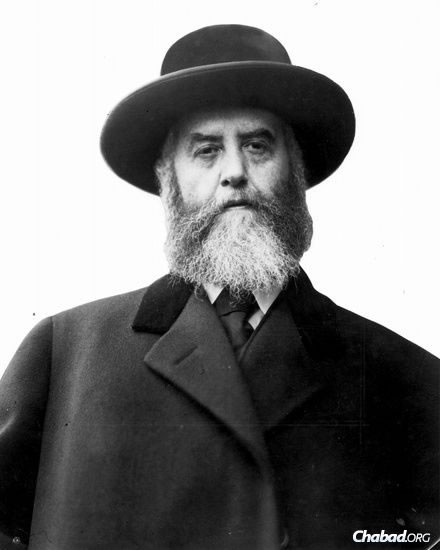
On Tuesday night, June 14th, 1927, the sixth Lubavitcher Rebbe, Rabbi Yosef Yitzchak Schneersohn, of righteous memory, was arrested by officers of the Leningrad precinct of the Soviet Secret Police (the OGPU). Seven years earlier, he had assumed the leadership of Chabad, following the passing of his father, Rabbi Sholom DovBer. He had worked tirelessly to rally the Jewish community and rebuild the institutions of Jewish life, which had been wrecked by years of civil war, famine and political chaos. From the very beginning, however, he had been hounded by the virulently anti-religious “Jewish Section” of the Communist Party: the Yevsektsiya. This picture, which captures the Rebbe’s defiant spirit in the face of extreme adversity, was taken two and a half years after these events, during a visit to Baltimore, Maryland.
2. Cheshvan 5687/October 1926, Ukraine: The Korosten Assembly
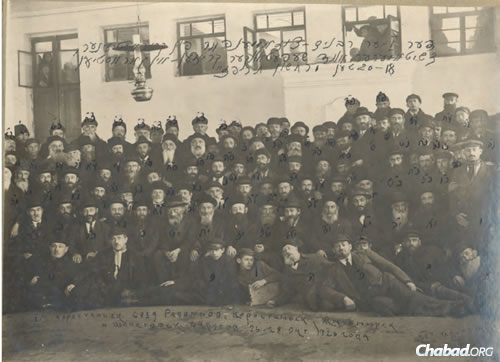
Among the events that led to the Rebbe’s arrest was a rabbinic assembly held in October 1926, in Korosten, Ukraine, to lobby governmental authorities to recognize Jewish religious institutions. The Rebbe was initially opposed to the meeting, as he feared it would incite backlash against the network of activists who were placing their lives on the line to preserve traditional Jewish life and practice. While he did not attend the assembly in person, he had clearly given his tacit support, and among the attendees were many Chabad representatives. In recognition of his de facto status as leader of Russian Jewry, the Rebbe was appointed honorary president in absentia. This public display of audacity further raised the ire of the Yevsektsiya. R. Bentzion Shemtov, who attended the assembly as the Rebbe’s representative, later wrote, “During my interrogations [at the hands of Soviet officials], I saw that this assembly was a major cause of the Rebbe’s imprisonment.”
3. A Raid in London, an Assassination in Warsaw: Terror in Russia
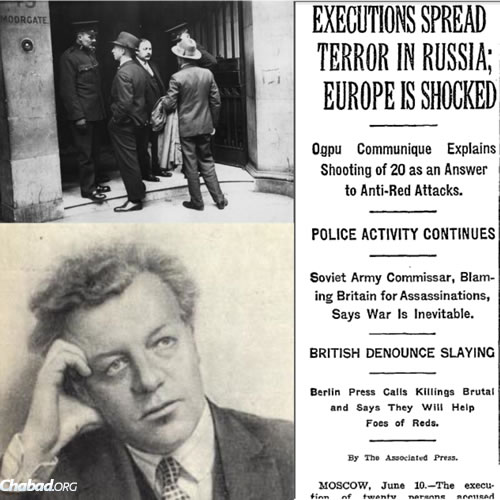
On the top left, British police stand guard after raiding the offices of the All-Russian Co-operative Society (ARCOS) in London on the 12th of May 1927, just one month before the Rebbe would be arrested. ARCOS represented Soviet trade interests in Britain and also served as a front for spying activities. In the wake of the raid, the Soviet government cut all trade and diplomatic lines with Britain. The delicate state of international diplomacy was dealt a further blow when Pyotr Voykov, the Soviet ambassador to Poland—pictured bottom left—was assassinated in Warsaw. Newspapers reported that Europe was on the brink of war, and in Russia the secret police began rounding up and executing political dissidents. It was in this tense atmosphere, barely a week after Voykov’s assassination, that the Rebbe was arrested.
4. Shpalerka Prison, Leningrad: Brutal Incarceration
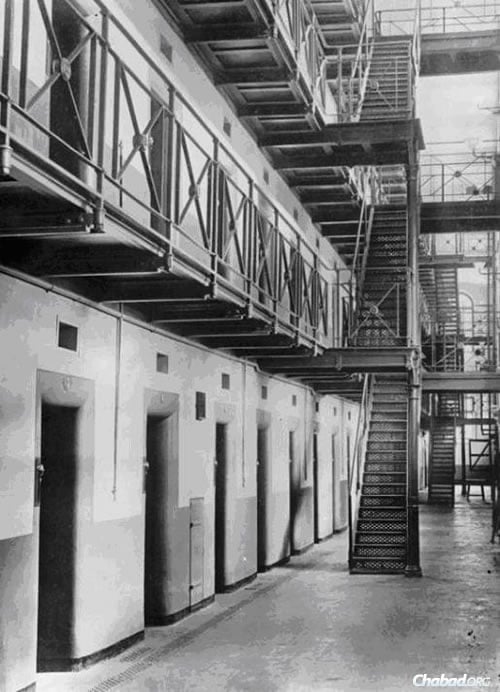
This striking image shows the tiered steel staircases in the House of Preliminary Detention, at 25 Shpalernaya Street, also known as the Spalerno or Shpalerka prison in Leningrad, where the Rebbe was taken after his arrest on the night of the 14th of June. A wrong turn in a corridor saved him from the summary execution that many other arrestees suffered during this period. But he spent 19 days under the most difficult conditions, and was several times threatened with execution or with solitary confinement in a filthy dungeon. The morning after his arrival, the Rebbe demanded that he be given time to put on his tefillin. When he realized that his request would not be granted, he began to don the tefillinas he climbed the steel staircase. The guard who was leading him turned and angrily shoved the Rebbe so that he toppled down the stairs, suffering a severe wound to his abdomen. His tefillin were subsequently confiscated, causing him pain of an altogether different kind.
For more on the Rebbe’s ordeal in Shpalerka see, The Rebbe’s Prison Diary.
5. Alerts and Intercessions in Leningrad and Moscow: The Rebbe’s Sons-in-law
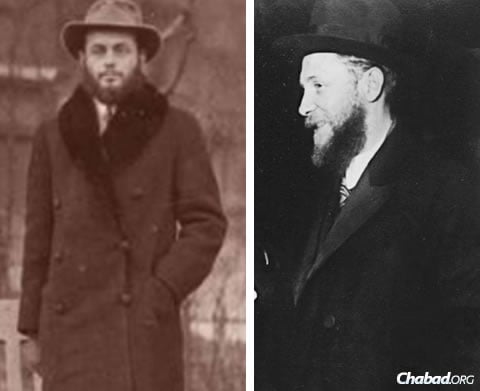
At the time of the arrest, Rabbi Menachem Mendel Schneerson was already the intended groom of the Rebbe’s second daughter, Chaya Mushka, and he would later succeed his father-in-law as Rebbe. The picture on the left was taken at Purkersdorf, Austria, in the early 1930s. Unaware of the ongoing raid, he was about to enter the Rebbe’s house, when Chaya Mushka called out to him from an upper window: “Schneerson, we have guests.” Understanding immediately what had occurred, R. Menachem Mendel rushed to inform senior chassidim, giving them vital time to destroy incriminating documents. After a long, deliberative meeting that ended early in the morning on Thursday, the 16th of June, Rabbi Shemaryahu Gurary (pictured on the right, circa 1930)—who had married the Rebbe’s eldest daughter, Chana, in 1921—was dispatched to Moscow. To seek international assistance, it was originally assumed, would provoke the Soviets and further endanger the Rebbe. Instead, R. Shmaryahu would activate a network of contacts in Moscow to intercede at the highest levels of Soviet power.
6. Yekaterina Peshkova: Official Soviet Humanitarian
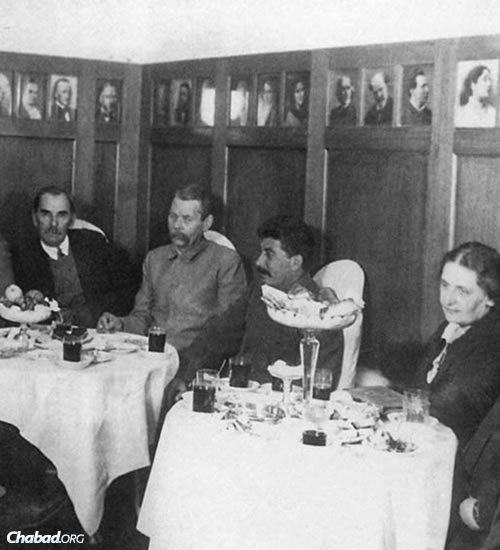
The person most instrumental in securing the Rebbe’s safety and eventual release was Yekaterina Peshkova, one of the most formidable and fascinating women of the era. She was the first wife of the famed Russian writer and friend of Stalin, Maxim Gorky, and had personal access to the highest officials in the Soviet bureaucracy. As head of the Political Red Cross, she was one of the very few individuals in Russia who could petition for the rights of political prisoners both safely and effectively. At every stage of the bureaucratic process, and with every new obstacle that arose, the chassidim turned to her for help on the Rebbe’s behalf. In this picture, taken in 1928, she is seen at a private tea party seated directly to the left of Stalin. Her husband, Maxim Gorky, is seated to Stalin’s right.
7. The OGPU and the Yevsektsiya: Between Moscow and Leningrad
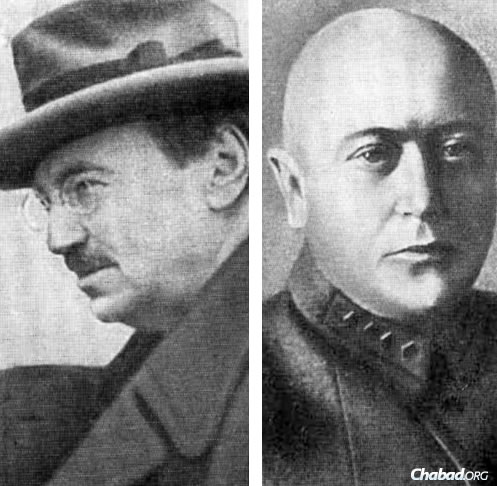
Perhaps the least likely person that Peshkova enlisted in the effort to free the Rebbe was Vyacheslav Menzhinsky (pictured to the left), the national chairman of the Soviet Secret Police (the OGPU). It was Menzhinsky’s close associate, Stanislav Messing (pictured to the right), who was directly responsible for the Rebbe’s arrest. Messing was the chairman of the Leningrad OGPU and deputy chairman of the national OGPU. He was also a Jew and a one-time chassid. In general, the Jewish branch of the Communist Party, the Yevsektsiya, wielded political influence yet did not have the power to make arrests. But in Messing, the viciously anti-religious sentiments of the Yevsektsiya were combined with the ruthless power of a leading official in the state security apparatus. Initially, the chassidim in Moscow feared that Messing might be so incensed if his superior pulled rank on him that the Rebbe’s life would be put at risk by the intervention. But when news arrived that a death sentence had already been issued, they realized that they had nothing left to lose. The central Moscow authorities had a more ambivalent attitude towards Judaism than the Yevsektsiya, and there was reason to hope that they could be persuaded to intervene on the Rebbe’s behalf.
8. Rabbi Avraham Yitzchak HaCohen Kook: A Telegram from Jerusalem
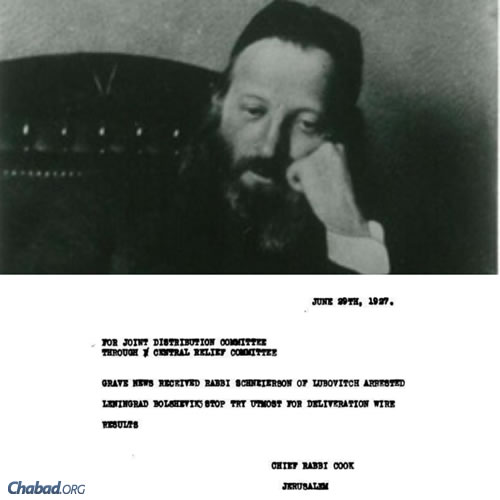
As noted above, the Rebbe was arrested in the midst of an international diplomatic crisis, and the Soviets had placed an embargo on outgoing telegrams. Consequently, news of the Rebbe’s incarceration, and of the threat to his life, trickled out even more slowly than usual. On the 28th of June, international newspapers started to report the arrest. The following day, Rabbi Avraham Yitzchak Ha-kohen Kook, Chief Rabbi of the Holy Land, wired the American Joint Distribution Committee with an urgent message: “Grave news received, Rabbi Schneierson of Lubovitch (sic) arrested [in] Leningrad [by] Bolsheviks. Try utmost for deliveration (sic). Wire results.” Two years later, the Rebbe would visit the holy city of Jerusalem, occasioning a particularly emotional meeting with Rabbi Kook.
9. Dr. Joseph Rosen: A Telegram to the Kremlin
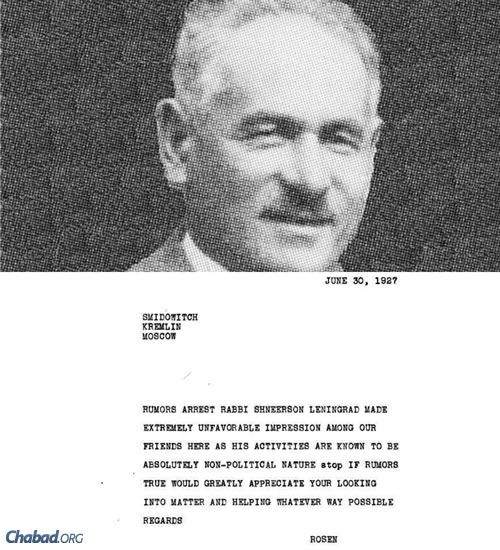
Dr. Joseph Rosen was head of the Agro-Joint, a humanitarian organization run by the American Joint Distribution Committee in collaboration with the Soviet government, primarily to support Jewish agricultural settlements. Rosen had met the Rebbe on numerous occasions in Moscow, and had facilitated funding for the Rebbe’s network of rabbis and activists working for the preservation of Jewish religious life. In a sharply worded telegram to a senior official in the Kremlin, Pyotr Smidovich, Rosen emphasized that the Rebbe’s activities “are known to be absolutely non-political.” Indeed, the Rebbe himself pointed out to his interrogators that he had been a full supporter of the government’s partnership with the joint: “Three years ago, in the year 1924, I wrote a letter to the Jews of America urging them to support the Jewish agricultural settlement in the Soviet Union. You imprison me as an enemy of Jews and the state. This is totally false. Though great differences divide us, I support those efforts that are creative, as my letter to America substantiates.”
10. Pressure Builds: A Meeting in Berlin
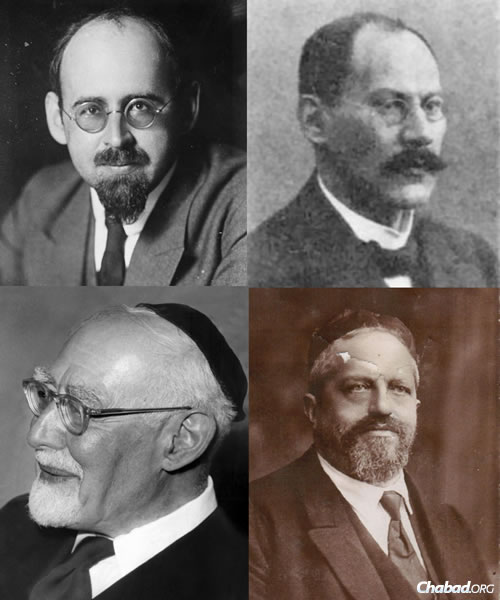
Another source of international pressure came from Berlin, where Rabbi Meir Hildesheimer, head of the famed Hildesheimer Rabbinical Seminary (pictured bottom right), and Dr. Leo Baeck, a prominent leader and theologian of liberal Judaism (pictured bottom left), contacted Dr. Oskar Cohn, the Jewish representative of the Socialist Party (pictured top right). The latter arranged a meeting with the Russian ambassador to Berlin, Nikolay Krestinsky (pictured top left), who assured them that this was a Yevsektsiya plot, and that the Rebbe’s arrest had not been instigated by the central government in Moscow. Despite the insistence of the Yevsektsiya that the Rebbe was an enemy of the state, senior state officials ultimately understood that they could not legitimately classify his advocacy for religion as criminal. Krestinsky pledged to do all he could to ensure the Rebbe’s safety and release.
11. Intervention from the Top: Alexei Rykov, Premier of Russia
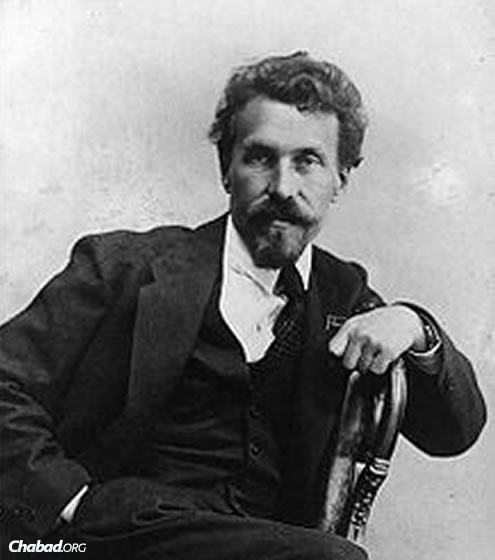
The most powerful figure to intervene on the Rebbe’s behalf was Alexei Rykov (pictured). Though, practically speaking, Stalin was already asserting his supreme authority, Rykov was the reigning Premier of Russia at the time. Under increasing internal and international pressure, the central authorities in Moscow commuted the Rebbe’s death sentence, first to ten years of hard labor in the Solovetsky Island prison camp—described as “the mother of the Gulag”—then to three years of exile in Kostroma, some 300 km to the northeast of Moscow. Messing, the anti-religious chairman of the Leningrad OGPU, was furious at these interventions, and retaliated by ordering the Rebbe to travel to Kostroma on Shabbat. Knowing that a public desecration of the Shabbat would weaken the morale of all who looked to him for inspiration, scoring a victory for the Yevsektsiya, the Rebbe refused to comply. In desperation, the chassidim again contacted Yekaterina Peshkova of the Political Red Cross. Through Peshkova’s efforts, Rykov personally called Menzhinsky, the national chairman of the OGPU, and ordered him to reschedule the departure for Sunday.
12. Diplomatic Leverage: The Russo-Latvian Trade Deal of 5687/1927
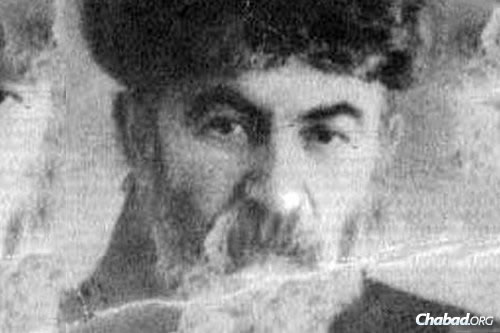
On June 2nd, less than two weeks before the Rebbe’s arrest, Latvia had signed a historic trade agreement with the Soviet Union. But it remained subject to a vote in the Latvian parliament that would not be held until the end of October. Controversy surrounding the deal was heightened by the raging diplomatic crisis between Britain, Poland and the Soviet Union. Latvia was caught in the middle, which led to heated debates in parliament and in the press. Mordechai Dubin (pictured) was both a Chabad chassid and an elected member of the Latvian parliament, and he realized that the situation could be leveraged to the Rebbe’s benefit. Within ten days of leaving for Kostroma, the Rebbe was released and allowed to return home. It was clear, however, that every moment that the Rebbe remained in Russia was dangerous, and efforts were immediately begun to secure his exit. In the face of sustained refusal on the part of Soviet officials, Dubin travelled to Moscow to negotiate. By now it was obvious that the Russo-Latvian trade deal could only pass by a very narrow vote. When Dubin made it clear that his support was entirely dependent on a guarantee of the Rebbe’s safe passage to Latvia, the Soviet authorities reluctantly acquiesced to his demands.
13. Farewell and Freedom: Physical Distance Shall Never Separate
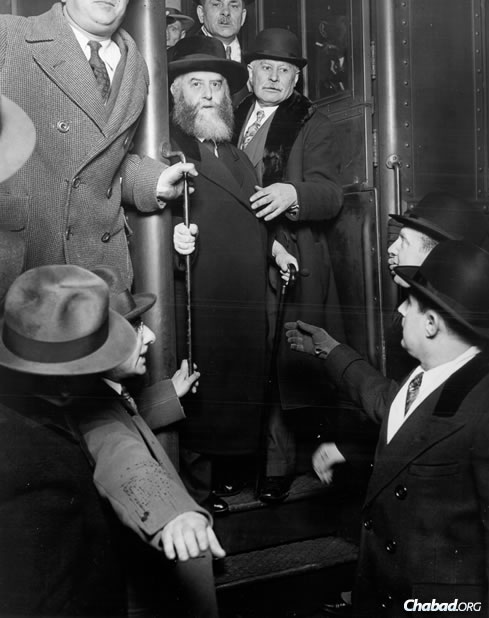
Standing on the train before his departure for Kostroma, the Rebbe delivered a stirring address to the many chassidim who had flocked to the Leningrad station to see him off. “G‑d be with us, G‑d will be with us . . . Torah, mitzvahs and Jewish custom are not subject to the opinion of others, nor can any oppressive force be used against them . . . We must remember that imprisonment and hard labor are only temporary things, whereas Torah, mitzvahs and the Jewish people are eternal . . .” Less than four months later, the Rebbe again boarded a train, preparing to leave Russia for good. At station after station along the route, throngs of chassidim gathered, and there were many poignant moments of painful loss, faithful hope and deep connection. In a farewell letter penned on this momentous journey, the Rebbe wrote: “As water reflects a face, my heart is awake and feels the pure sweetness and power of the inner and essential bond of the entire community of chassidim . . . My faith shall strengthen me and be my comfort, that physical distance shall never, ever separate us, G‑d forbid . . . May G‑d delight my heart and yours, in seeing children and grandchildren engaging with Torah and mitzvahs, with abundant means physically and spiritually . . . all their concerns, both physical and spiritual, reach the deep core of my heart . . .” This picture was taken during the Rebbe’s 1929 visit to the United States.
For more on these trackside moments of farewell and eternal connection, see The Smoke of the Rebbe’s Train.

I’ve been hearing the story of Yud-Beis Tammuz since childhood, but your description with all the political and personage details was fantastic! Really gave context and meaning, made it very real. Thank you!